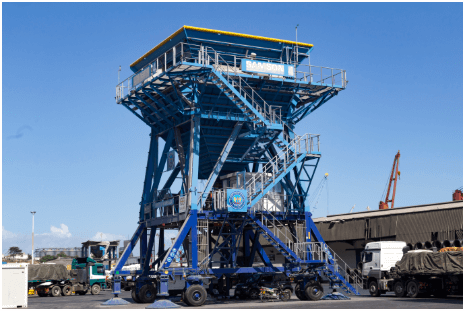A few years ago, the cargo handling section of Mombasa port teamed with dusty and sweaty workers busy hauling heavy packages on their backs, from the warehouses to the waiting lorries. Injuries and chest pains were a norm.
One of these workers was Humphrey Agini. He recounts how the polluted and risky work environment caused him to take many sick leaves; and quantifies the wages he lost, as a result, to the thousands of shillings.
He wishes away those back breaking days .
For years, Humphrey, who is employed by Kenya Ports Authority (KPA) spent his days offloading heavy sacks of clinker, coal, fertiliser and industrial chemicals. The fierce sun would burn on ruthlessly. He worked for sheer survival. Each time he was about to give up, he remembered his parents back in the rift valley region of Kenya and his younger siblings who relied on the earnings he made. He became a sort of expert in handling dirty cargo. Yet, protective gear was unheard of and many were the days when both he and his colleagues fell ill. Just as hundreds of other port workers shared in his fate; so, did hundreds of importers and exporters, who contended with the delays this caused to exit or enter the port.
Greening the port takes off
Humphrey’s hard work and diligence had caught the eye of his superiors. And so, when KPA in partnership with TMA transitioned to mobile harbour cranes for bulk cargo handling in 2017, to increase port productivity, he was employed as a mobile crane operator. And when the two partners resolved to acquire the environmentally friendly Eco-Hoppers, in 2017, Humphrey was one of the 19 workers who received training on how to operate the Eco Hoppers. “We were trained for 1 year and five months before supply of the equipment and after they were commissioned and in use. During the training I was chosen as the Eco Hopper team leader.”
Committed to improving the efficiency of Mombasa Port, TradeMark Africa supported KPA’s efforts toward greening the port through its Mombasa Port Resilient Infrastructure Programme (MRIP) to improve the ports environmental and social conditions. This multipronged programme funded by UK’s Department for International Development (DFID), has enabled the port to mitigate and adapt to climate impacts. The programme ranges from complex initiatives; like acquiring modern specialised environmentally friendly bulk cargo handling equipment such as Eco-Hopers and mobile harbour cranes and adoption of modern energy solar supply power system.
Results achieved under this programme include removal and disposal of asbestos, efficient and green transport logistics through modal shift from road to rail, planting of trees, eco-terra facing slope protection, improvement of water supply and waste management and infrastructure improvement such as eco-friendly conveyor belts.
Modern technology – pollution prevention
Paul Bor, the Head of Conventional Cargo Operations at KPA says the new technologies such as Eco-Hoppers and the Mobile Harbour Cranes, have greatly contributed to greening the port agenda, increased port efficiency, and changed the lives and health of port workers in the ten months they have been in operation. “We have recorded fewer sicknesses and less absenteeism since the Eco-Hoppers were introduced and the Green Port Policy enhanced its tentacles.” The engines do not produce the smoke and the technology reduces dust.
“The Eco hopper machine sucks in all the dust as it lowers cargo into trucks. The grabs have capacity of 25 tonnes compared to the traditional ones which had 5 to 10 tonnes capacity. This has led to reduction in time taken to offload bulk cargo from a ship thus reducing the ship turn around time. The Eco-hoppers have dramatically led to a reduction in number of sick leaves from workers. We work for 8 hours a day and we normally have 2 shifts, with each person operating the machine for 4 hours.” Says Humphrey.
The lorry carrying the dusty cargo drives between the gigantic ‘legs’ of the hopper. A dust sucking filter is then lowered into the lorry. Since the Hopper is computerised, the operator can visually access every part of the lorry to ensure all the dust is sucked out and safety is enhanced.
Impact on the environment was immediate: “The smoke and dusty emissions have gone down. The hills within the port where we had planted trees, grass and shrubs have remained green,” Says Bor. “The dust used to be a nuisance and a major expense to the port. We used to have our computer centre near Berth number 13. The clinker dust almost destroyed our servers.” Recalls Bor who has worked at KPA for 25 years.
The eco hoppers have also speeded up operations due to their ability to scoop and load more cargo than the traditional hoppers that had been used for years. That has improved significantly resource efficiency. Trucks now move faster in and out of the port.
“With the Eco-Hoppers, the ships that would take 10 days to offload clinker can now be served within half the time. The kind of ships that dock here normally come with a parcel of 45 to 50 tonnes of metric tons of clinker and it now takes us an average 6 days or less to offload.” Says Bor
Bor says that clinker cargo has grown tremendously due to demand from increased cement factories around the country and the region and a vibrant construction sector. Today, KPA handles about 3 million tons of clinker every year, 40% of which goes to Uganda with Kenya consuming the remaining 60%. Says Bor: “Before the Eco-hoppers, we would handle about 5000 to 7000 metric tons of clinker per day. Today, we handle 10,000 tons per day. When we receive a vessel of 50,000 tons, we can clear it within 5 days. That is how efficient the Eco-Hoppers are.”
Bor however says that for the port to operate at its optimum, it needs four more Eco-Hoppers: “The current Eco-Hoppers can only service one vessel at a time which is difficult when two ships dock. We also need additional Harbour Mobile Cranes so that each crane can serve one Eco-Hopper. Provision of specialised trucks and wagons with covers are required for transporting clinker to the hinterland to prevent dust emission”
A perfect complement – Port physical infrastructure rehabilitation
Complementary to the eco-friendly machines, KPA has undertaken various physical infrastructure upgrades, with the same objective. In those days before KPA initiated the Green Port Policy, some dock yards lay in ruins. Large swamps inhabited by rodents and other creatures covered sections of the port depending on the weather conditions.
Whenever rains fell, heavy machines got stuck in the muddy and soggy yards. Sometimes for days. In dry season, the yards would turn into dusty enclaves inhibiting visibility at the port. One of those was yard 5 and the G-Section yard.
In 2015, at a time when the Green Port Policy was being formulated, a senior Project Engineer at KPA, Kennedy Nyaga described one of the yards. “For close to 100 years, Yard 5 was an abandoned area. We could only use it for two weeks in a month in the rainy season.”
As part of the port rehabilitation process, TMA, with funding from DFID rehabilitated, paved and modernised yard 5. Yard 5 covers an area of 17,300 square meters. The project was started in 2013 and completed in 2014 at a cost of USD 19.45 million. An upgraded yard 5, created an additional 293 Ground Slots with an annual yard capacity of 77,778 Twenty Feet Equivalent Units (TEUs) thereby increasing the container handling capacity of Mombasa Port. It has reduced truck turnaround time from 6 hours to 4 hours and also catalysed additional investment by KPA in Rubber Tyred Gantries at a cost of USD$ 5.5 million.
“The rehabilitation of Yard 5 has tremendously improved the business space at the port: “We are now able to stack the 293 20-foot containers at a height of four per slot in an average of four days. The has enhanced the annual capacity to 1.32 million TEUs”.
Installation of a solar power plant at the Port of Mombasa is generating 410KW of green energy per day for use in workshops operations and lighting in offices. The project also included removal of asbestos, re-roofing of workshops and rainwater harvesting. The project was completed in March 2018 at a cost of USD 3.2 million.
It’s all about Green Growth
When Humprey Agini, talks of a cleaner environment, healthier motivated workers and increased productivity, he points to green growth. And when Paul Bor indicates increased capacity resulting from quick turnaround time. He points to green growth. Green Growth is important when we talk about the health of workers at the Port of Mombasa. The growth resulting from greening has led to many good things, increased revenues, better asset utilisation, catalysing additional investments, better human resource productivity and a win-win relation between Kenya Port Authority, port workers and traders.
Humprey takes his evening break. He takes off his protective gear and wears a warm smile. The transformation, he says, over the last 7 years, can only be sustained and points to an upward trajectory for coming years. For now, he is still getting used to going home in clean clothes. The days of dust and mud, sweat and toil are long gone.


